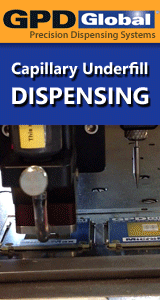What have your experiences been with static meters for maintaining your ESD program?
As part of our ESD program I am after an improved method of identifying risk items, or items not performing to specification. We use wrist and foot straps, ESD flooring, esd workstations and some ionizers.
The Wrist and foot straps are tested twice daily, the workstations and flooring are tested at regular intervals. I am happy with the methods being used to do this.
My concern is with the ionizers and general materials that seem to continually make it into the ESD environment. These range from the item packing, to insulating material prone to generate ESD charge. Ideally these should be kept well away from an ESD safe area, but they are required in the products. In fact they are assembled against sensitive components. I need some method of detecting the presence of the charge on items as well as the performance and effectiveness of the ionizers.
Sadly we are not in a position to have suppliers that will enable us to have demo meters to trial which makes it difficult to identify which ones suit our need best.
Of most value is feedback from those of you who have used or characterised multiple meters but good and bad experiences with any particular item or technique would also be appreciated.
Considerations on cost of ownership of lifespan of the testers is also of interest.
Comments on ionizers and effective methods of implementing them from experience would be great too. The papers I have read suggest that an ionizer out of balance will cause a charge to be induced on insulating items, thereby creating a worse situation than if they were not used at all. Is this the case?
reply »
![]() What have your experiences been with static meters for maint...
- Jul 10, 2002
by
Mike
What have your experiences been with static meters for maint...
- Jul 10, 2002
by
Mike
![]()
![]()
![]() A field meter would be nice. Suppliers are: ...
- Jul 10, 2002
by
davef
A field meter would be nice. Suppliers are: ...
- Jul 10, 2002
by
davef
![]()






